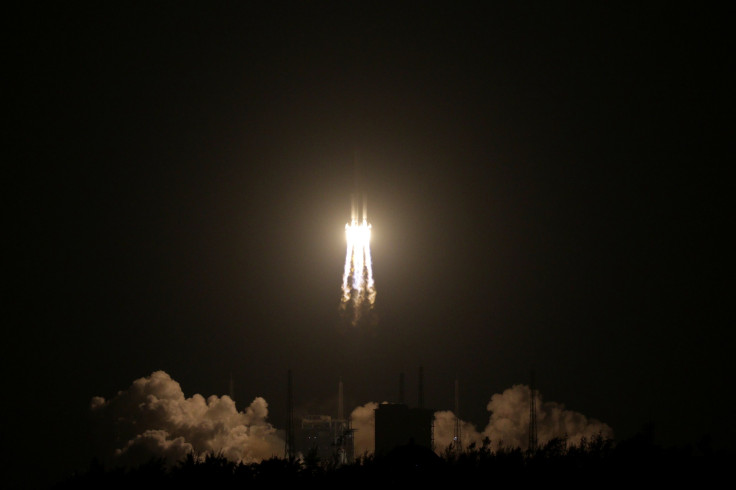China Space Program: Chang’e-5, First Lunar Sample Return Mission, To Be Launched In November

China will launch its new lunar probe, the Chang’e-5, in November, the state-run People’s Daily newspaper reported Monday, citing the China Aerospace Science and Technology Corporation — the main contractor for China's space program. Chang’e-5 would be China’s fourth moon mission and the first lunar sample return mission since the Soviet Union’s Luna 24 in 1976.
The probe will be launched aboard a heavy-lift Long March 5 rocket, whose payload capacity is only slightly less than the Delta IV Heavy — currently the world’s most powerful rocket that can carry over 28 tons of payload to low-Earth orbit.
“With a weight of 8.2 tons, the lunar probe is comprised of four parts: an orbiter, a returner, an ascender and a lander,” Ye Peijian, one of China's leading aerospace experts and a consultant for the program, was quoted as saying by People’s Daily.
The lander will collect the lunar samples and put them in a vessel in the ascender, which will dock with the orbiter and the returner. These three will then head back to Earth.
The launch of Chang’e-5 would mark the beginning of the third phase of China’s lunar program. So far, the country has successfully launched two lunar orbiters — Chang’e-1 and 2 — and one lander — Chang’e-3, which soft landed a rover on the surface of the moon in 2013.
In a white paper outlining the plans for its ambitious space program, China announced in December that it would, sometime in 2018, seek to become the first country to soft land a probe on the far side of the moon. The spacecraft, Chang’e-4, would help better understand the formation and evolution of the moon, the country’s State Council Information Office said in the paper.
“Through the lunar exploration project, topographic and geological surveys will be implemented and laboratory research conducted on lunar samples; geological survey and research as well as low-frequency radio astronomy observation and research will be carried out targeting the landing area on the far side of the moon,” the white paper read.
In addition, the white paper also reiterated China’s commitment to send a probe to Mars by 2020.
“[China] will conduct further studies and key technological research on the bringing back of samples from Mars, asteroid exploration, exploration of the Jupiter system and planet fly-by exploration,” the information office said.
The Chang’e-5 mission, and next year’s Chang’e-4 mission, would help China test key technologies for its mission to Mars.
© Copyright IBTimes 2024. All rights reserved.






















